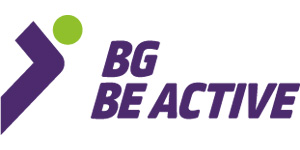
WHY is PL important?
Introduction to the module: WHY is Physical Literacy important?
Physical literacy is a key competency where knowledge, skills, and attitudes are acquired by all citizens for personal fulfilment and development, employability, social inclusion, and active citizenship. It has the potential to allow every individual to flourish on their unique physical literacy journey throughout life. Physical literacy challenges the way in which individuals engage in and understand physical activity. It offers an alternative approach to encourage individuals to engage in physical activity to improve themselves by developing their physical, cognitive, emotional, and social attributes. Physical literacy is the golden thread that radiates through play, physical education, physical recreation, fitness, sport, and active lives. The concept of physical literacy recognizes that humans learn for different reasons, whether for survival, social connection, or self-actualization. Individuals learn to move but also move to learn. The importance of physical literacy becomes self-evident as individuals engage with the world and learn to move their bodies for social, aesthetic, competitive, and even survival reasons. This is not just for health reasons but also to flourish and gain pleasure from their everyday lives. Physical literacy is a concept that asks educators to celebrate each individual’s strengths and to use these as a foundation for learning (and teaching) to live meaningful and healthy lives through physical activity, sport, recreation, and leisure. Educators can make a number of organizational decisions and develop content in ways that help students learn new and increasingly complex movement sequences. As individuals develop their physically literacy, they learn a variety of cognitive, social, affective, and physical skills, so they can use these outside of formal educational institutions. This process is a lifelong journey where every individual engages in physical activity based on their disposition and learning.
Why is Physical Literacy important?
Physical literacy is a life-long gift and quality. A gift we should give to all children from early age as it improves their learning abilities and capacity – not to forget their social skills. It is not a quick solution you can order online. Physical literacy is a life- long enjoyable commitment.
Why from a national perspective?
11 organisations and institutions , the Physical Literacy for Life project partners, are committed to improving the lives of all Europeans through sport and physical activity. We want to see more people moving throughout their life course, because this has essential benefits for our physical, emotional, cognitive and social wellbeing. They share their statements with you.
Message from a trainer - WHY is PL important for me?
Charlotte Egede Frost from Denmark
Miha Cmer from Slovenia
Mikkel Daniel Jung from Denmark
Rado Trifkovic from Slovenia
Message from a teacher - WHY is PL important for me?
Thibaut Derigny from France
Supporting material
This a collection of supporting materials on Why is Physical Literacy important according to the Physical Literacy for Life Erasmus+ project partners.
Questions for reflection:
Why is PL important for you?
What does PL mean to the people that you work with & and to everyone?
What will be your position statement of PL?












